
“Safe and accessible air travel is a basic civil right that should matter to everyone. But it can be difficult, and even dangerous, for people who use wheelchairs.” [1]
“Flying can present challenges for passengers with disabilities, whether physical or hidden, making the experience stressful or even painful. The airline industry is dedicated to enhancing air travel accessibility, ensuring a safe, reliable, and dignified journey is accessible to everyone.
Airlines and airports are actively collaborating with the accessibility community to make flying hassle-free for all passengers. Our commitment is to transform air travel into an inclusive, barrier-free experience for those with special travel needs.” [2]
Ways to be more accessible
Making air travel more accessible involves addressing barriers for people with disabilities, the elderly, and others with special needs. This requires improvements in physical infrastructure, staff training, technology, and policies. Here are key ways to enhance accessibility:
1. Improved Airport Infrastructure
- Accessible facilities: Ensure terminals, restrooms, and lounges meet universal design standards (e.g., wide pathways, ramps, tactile signage).
- Wayfinding aids: Use high-contrast signage, audible alerts, and tactile floor paths for visually impaired travelers.
- Transportation services: Provide wheelchair-accessible shuttles and easy connections between terminals and public transport.
2. Better Mobility Assistance
- Reliable wheelchair services: Ensure prompt and respectful wheelchair assistance from check-in to boarding and disembarking.
- Mobility aids handling: Train baggage staff on proper handling of mobility devices to avoid damage.
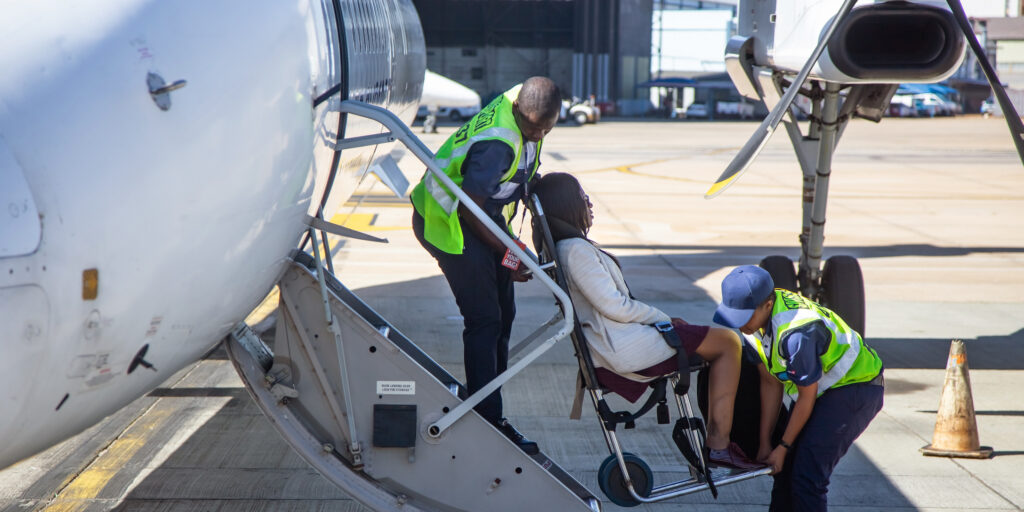
3. Inclusive Booking & Check-in
- Website/app accessibility: Design booking platforms to be usable with screen readers and keyboard navigation.
- Disclosure options: Allow travelers to indicate specific assistance needs when booking tickets.
4. Staff Training
- Disability awareness: Train all airline and airport staff in interacting respectfully and effectively with travelers with diverse needs.
- Emergency procedures: Include inclusive evacuation plans and drills.
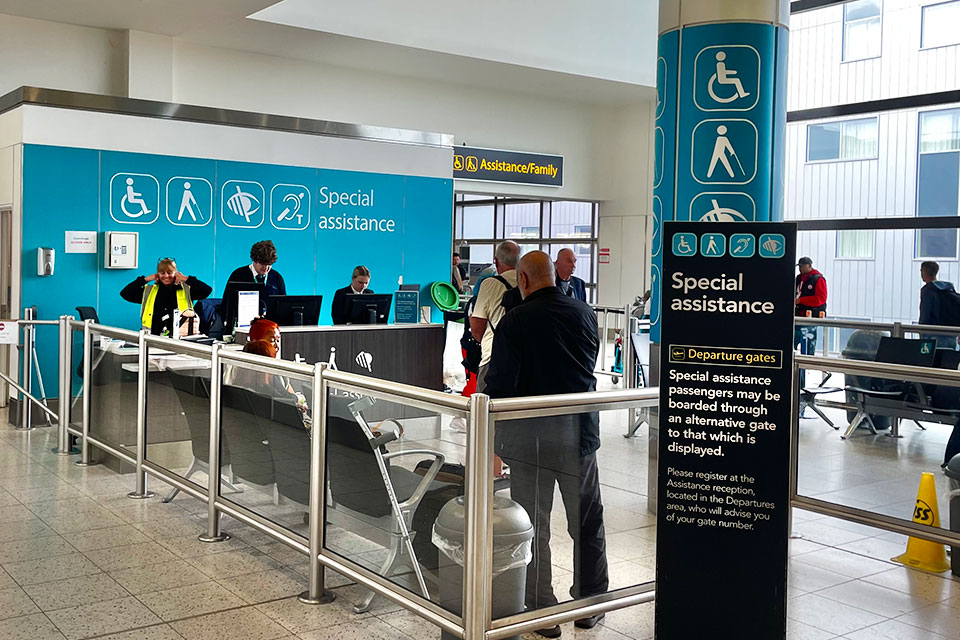
5. Aircraft Design
- Onboard wheelchair access: Equip aircraft with accessible lavatories and aisle chairs.
- Priority seating: Offer configurable seating for travelers with assistance animals, personal aides, or mobility needs.
6. Policy and Regulation
- Stricter compliance: Enforce and enhance legislation like the Air Carrier Access Act (US) or similar rules in other countries.
- Complaint resolution: Establish clear and quick systems for travelers to report accessibility issues.
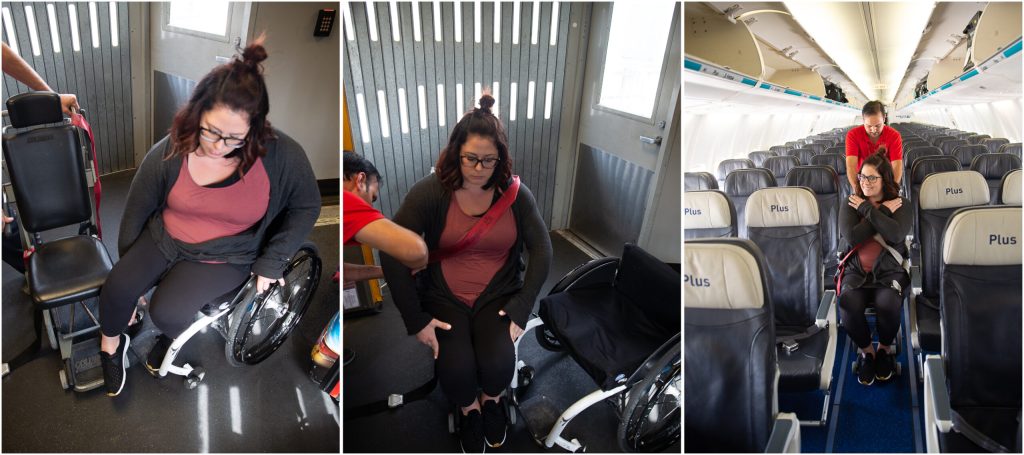
7. Technology and Innovation
- Real-time support: Use AI chatbots, live video agents in sign language, and app notifications for navigation and updates.
- Smart tags: Track mobility aids or luggage for peace of mind.
8. Community Involvement
- User feedback: Involve people with disabilities in the design and evaluation of services and spaces.
- Accessibility audits: Regularly assess and update practices based on feedback and changing needs.
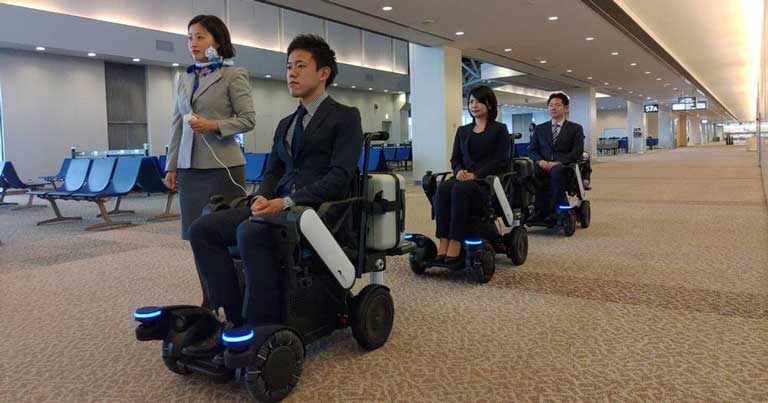
Airport ADA / Accessibility Travel Tips
“While airlines are working to become more accessible to people with impairments, passengers can take steps to make sure that they are aware of their options within the airport. After all, sometimes all it takes is to just ask. These airport travel tips will help passengers with impairments take full advantage of airline accessibility.
1. When planning your travel, outline your limitations and needs. Specify what type of assistance you will need, whether you want wheelchair services or another type of transportation.
2. Plan ahead for the type of restrooms that will be available, not only in the airport but also on the airplane. You can call to ask questions about the airline.
3. Check into boarding procedures. Some airlines provide pre-boarding or will offer assistance or an alternate route if the jetway won’t work for you.
4. Airplane seating is challenging for the most seasoned traveler. Consider which seat would work best for you in a row—that probably means avoiding the emergency exit row as well.
5. Notify the airline and flight attendants about your assisting devices so they can be stored safely.
6. Depending on your impairment, consider hiring a travel nurse to ease the traveling process for you.
7. Wait until you have your assisting device before exiting the airplane.
8. Always carry medications and backup prescriptions with you on the airplane, as well as any other necessary medical paperwork.” [4]
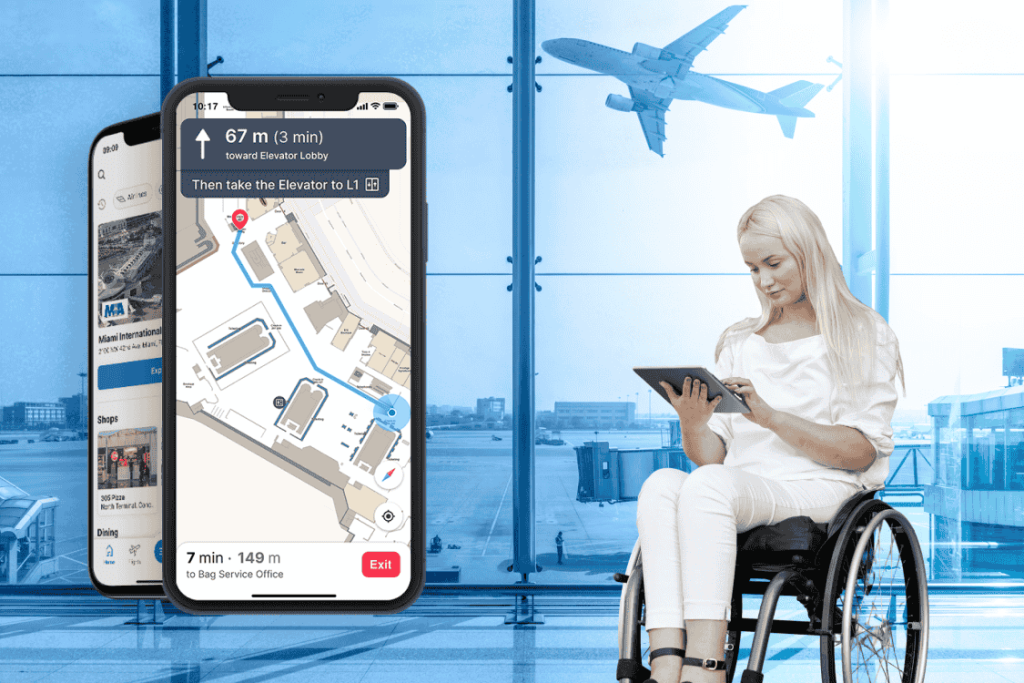
Beware of Surprise Costs
“Airlines have different standards for what they offer to passengers with disabilities. In fact, some airlines charge extra for providing more assistance to passengers. Therefore, you should check into what the airline standards are for assisting passengers with disabilities. You don’t want to be hit by a surprise cost or a sudden change in what was promised.
Airports need to become more accessible to individuals with impairments. Not only does the law require it, but as a society, we are must provide more options for all people.” [4]
https://www.transportation.gov/accessibility/priorities/air-travel
Resources
[1] https://pva.org/research-resources/tips-tools-resources/
[2] https://www.iata.org/en/programs/passenger/accessibility/
[3] https://chatgpt.com/c/681e415d-3520-8004-804d-ebafc51c14c4
[4] https://www.stronggo.com/blog/how-are-airports-becoming-more-accessible-people-impairments
